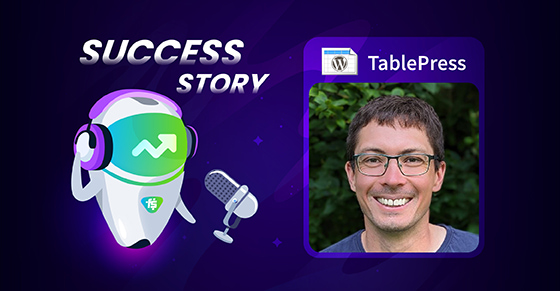Ben Sibley has always had an entrepreneurial spirit, as illustrated by the fact that he’s only had one ‘normal’ job — cashiering at a grocery store during high school. While still in college, he learned about internet marketing and SEO, which led to him dipping his toes into WordPress website creation. He was able to abandon his post at the cash register because he made just as much selling SEO services over the summers.
In this article, Ben recounts how he went from building a web app to theme creation to co-founding Independent Analytics, the first and only GDPR-compliant WordPress page-based analytics tool.

Hi Ben — welcome and thanks for joining us! Please tell our readers about yourself.
Hey Robert! Thanks for inviting me to share my journey with your readers.
A bit about me: I live in Philadelphia with my girlfriend, Izat, and my cat, Andre. I’m a bit of a health nut these days and I spend a lot of time cooking and working out when I’m not at the computer. I’m also an avid gamer and am currently diving head-first into the Palworld craze. 😂
How did you go from a WordPress side gig to full-time product creation?
In 2013, Andrew Mead — co-founder of Independent Analytics — and I had just graduated from Temple University (Go Owls!) and launched a web app together. I learned a ton through this process, but after about six months we weren’t gaining traction and had to throw in the towel.
It was a demoralizing flop. I moved back into my parents’ house and felt overwhelmed at the prospect of starting something from scratch.
Regardless, I needed to figure something out and since I had experience creating and running WordPress sites, I thought that would be a good space to get into.
I went to school for business — not computer science — so I had to learn how to code. It took me a while to get the basics down, but having this dream of developing my own WordPress themes kept me motivated.
After a few months, I finished my first theme and then made a few more over the following months.
Not so long ago, ThemeForest was the go-to for theme developers. Did you pursue anything with the company?
Funny you should ask!
I submitted my first three themes to ThemeForest, but they got rejected — one by one — via boilerplate emails. It wasn’t until I published them on WordPress.org that I received positive feedback and people started using them.
I got a lucky break when the review team featured one of my products on the Themes page (they used to hand-select them back then). Because of this promotion, it shot up to 1,000 downloads/day. Once that happened, I made my first paid upgrade and went on to publish 19 themes over the next few years. I still run Compete Themes today, although I plan on selling it soon.
That was my first foray into the product space in WordPress. About nine years later, Andrew and I teamed up again and launched Independent Analytics. Thankfully, it’s been a lot more fruitful than our first venture together!
Where did the idea for your flagship plugin come from?
I was building a blog calendar plugin when I had the idea for Independent Analytics. I thought it would be cool to have better stats for content, especially the ability to see performance based on the publication date and category.
This was originally going to be a feature in the other plugin, but the more I thought about it, the more I realized it needed to be its own plugin. I ended up selling the other plugin so I could focus on Independent Analytics.
What made you believe that you could compete with juggernauts like Google Analytics (and similar)?
I was confident because people were abandoning Google Analytics.
The data privacy issues had people second-guessing the platform for the first time and this created an opportunity for an alternative solution. Up until very recently, Google Analytics was the de facto solution. Now, a lot of people are considering/choosing alternatives. The forced migration to GA4 — which many people found slow and confusing — only added fuel to the fire.
We weren’t the first to launch a simpler alternative and other companies were already showing promising results — this was the final motivation I needed to take on this product.
Today, Independent Analytics offers a few advantages over Google Analytics, but the main idea is simplicity.
For example, the plugin starts tracking visitors on all your pages upon installation, so you don’t have to add a tracking code yourself. When it comes to data privacy, it doesn’t use cookies, store personal data, or communicate with outside servers, and this is all out-of-box.
This is also the default for more advanced features (like checking WooCommerce sales from each traffic source) and requires no configuration. It’s a far cry from Google Analytics’ process, which requires looking through their documentation and adding your own Javascript.
Most end users love how easy it is to use and the professionals like offering it to their clients for the same reason.
Tell us about the creation process and subsequent launch.
It took us about two months to create and ship version 1.0, which we launched in June 2022. We got off to a pretty good start with around 10 downloads per day from the plugin repository. We invested solely in the free version at first and then launched the pro version a few months later in September.

I think we struck a good balance with our MVP. We kept it as minimal as possible while still being useful. There weren’t any bells and whistles besides maybe the filters, but it had the essential features, like top pages and top referrers.
Since then, we’ve been steadily updating and improving things. We like to keep a cadence of bi-weekly updates, but we’ve gotten bogged down a few times with larger changes.
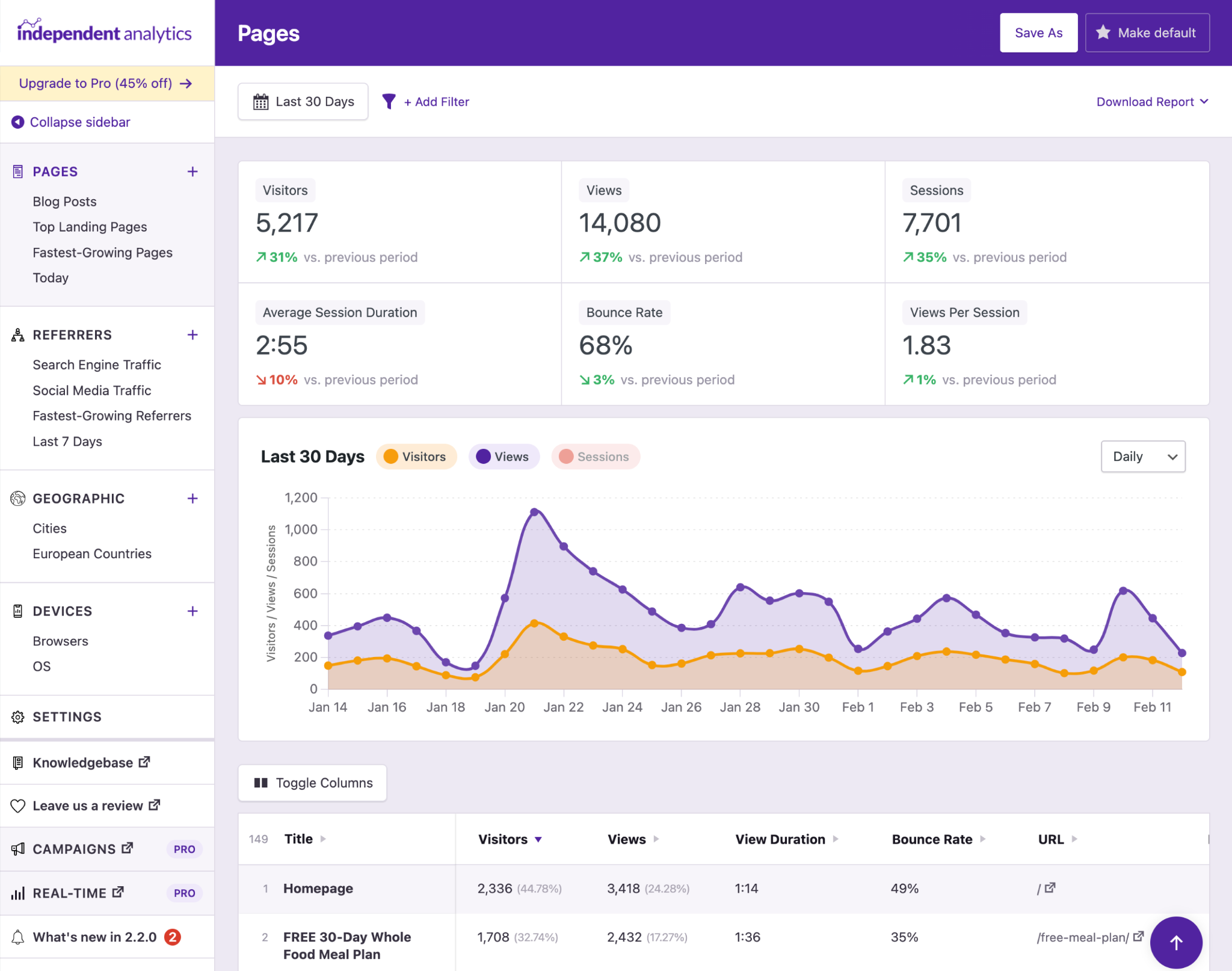
We’re about a year and a half into the business now and have more planned; our initial vision has not been fully realized.
You’ve had a wild growth journey! With so much dynamism at play, you must have a sizable team.
Independent Analytics is a two-person team — it’s myself and Andrew Mead. If anything, I’m the non-technical partner (haha).
We’re both developers, but my time is spent largely on marketing, customer support, and content creation. When I have time for development, I work primarily on the UI and front-end functionality.
All the back-end and the bulk of the development is handled by Andrew. His background is in computer science and when I started Compete Themes, he launched his first Udemy course and went on to reach 400K students teaching Javascript, Node, and React.
While Andrew does the majority of development, it’s really helpful that we’re both programmers. It makes it easy for us to communicate about every aspect of the plugin and how it’s being built. We sit down and plan out every release in Github Projects and look at feedback from users, recent emails, and our overall plan for the next six months or so. Occasionally, we get to use our whiteboard. 🤓

When the two of you aren’t planning/prioritizing on your whiteboard (😅), who takes care of support?
I’m able to handle most of the support volume myself, and that’s due to a well-defined process.
When someone contacts us with an issue, the goal is to never get that same email again.
If there is a bug, we fix it. If it’s due to an element of the UI being confusing, we redesign it. If it’s a question we haven’t answered in the knowledge base, I write a new article. If it’s a question that is in the knowledge base, I make it easier to find (same thing for pre-sales questions and sales pages).
If all of that fails, I save my response to be reused next time.
This process is difficult to follow ‘in the moment,’ so I do a review every month, looking at each of our prior tickets, and ask myself, How can I prevent this email from being sent again? This process has led to a lot of product improvements and over 100 articles in the knowledge base.
The next step is to implement videos in our tutorials and sales pages, which I’m just getting started on. A good deal of our pre-sale questions are difficult to answer through text, but they’re things people would understand easily if they were shown visually.
Being in the analytics game must come with its share of headaches — I can imagine privacy issues related to data are hard to navigate.
I’m going to knock on wood over here — knocks — but we haven’t had too much trouble with privacy or legal issues. Our practices are pretty straightforward and we follow the same strategies as other analytics tools to comply with GDPR. It helps that the plugin is open source and distributed, so we aren’t hosting anyone’s data, nor do we have access to it.
I see. So have you ever considered branching out into SaaS to expand your market? Or is the focus more on solving WordPress-specific analytics problems and remaining open source?
We won’t be branching into SaaS in the foreseeable future. We like niching down and being WordPress-exclusive. It’s one of the ways we’re able to compete effectively with other Google Analytics alternatives.
The WordPress market is still massive — it includes 43% of websites — which makes marketing easier.
For example, when someone is running a WordPress website, they might see a SaaS analytics app and consider it, but if they see there’s a WordPress plugin, that seems like the more appropriate solution. They already know how to install new plugins via their dashboard, so it only takes a minute to give it a try. If they’re happy, there’s no reason to look any further.
Subscribe and grab a free copy to start Mastering SEO on the WordPress.org Repository
Make the WordPress.org search algorithm work for you with actionable tips to rank your plugin higher.

And it seems that many users are happy — if your 5-star rating and 20,000+ active installations on WP.org are anything to go by 😉 What do you believe has contributed most to this success?
I think our focus on design has helped set Independent Analytics apart.
We make sure that the analytics are easy to use, things happen automatically when possible, and that the data is presented in a way that’s easy to read. Even small changes to the presentation of the data can make the difference between significant cognitive load and immediate understanding.
And of course, we like to make it look stylish and clean too.
So far, we’ve struggled to compete based on features, but this hasn’t worried us because that will come with time. We’ll be able to reach a wider audience as we continue developing the product, adding new features like form submission tracking and click tracking, for instance.
Google Analytics has had over 20 years to add features, so I think we’ve done pretty well with our first 1.5.
On a personal note, what has counted in your favor to help you get to where you are? And conversely, what has stood in your way?
I definitely couldn’t have built this business alone, so I was very fortunate to have a friend who was also ready to jump headfirst into a new business at the same time I was.
I also couldn’t have built Independent Analytics without prior WordPress experience. There’s a ton of valuable domain expertise that comes from knowing how WP works, all the ways that people use it, and the different expectations that users have.
As for things that have stood in the way, there have been some considerable technical challenges. It’s been difficult to get the analytics loading quickly for sites that get high volumes of traffic. 50,000 views per month is no problem, but 5 million? We haven’t figured that out yet.
The huge variety of database environments has been tough to handle, too. We’re learning how to work around all sorts of oddities, like:
- tables with mismatched collations
- random connection timeouts
- limitations from severely outdated versions of MySQL
- users with DB prefixes that are 30 characters long causing table names to exceed the 64-character limit
I could go on! One by one, we encounter these issues and make our code more formidable, but the going can be tough.
A typical business (and personal) day in the life of Ben Sibley — please fill us in.
I’m up at 8 am, make a cup of green tea, and then I get to work. I usually start by answering support tickets and clearing out my inbox. Then I’ll switch to my most challenging task of the day.
This changes frequently, but it’s usually something like writing an article, UI design, or programming. I always prioritize my most challenging work first, and save the easier stuff for the afternoon.
Most days, I’ll head to the office after an hour or two of work at home. I usually walk, and it’s about 1.5 miles. I like this time going to and from the office to clear my mind, and I often get new ideas during the walk.
At the office, I’ll knock out another work session, stop for lunch, and then wrap up my day with some lighter tasks, like organizing my notes, posting on social media, and planning tomorrow’s tasks.
I used to be a total workaholic, but now I stop my work day around 3 pm. This gives me time to go to the gym, cook a good meal, and have plenty of leisure. Through most of my twenties, I would work seven days a week and fall asleep at my computer, but I’m really glad I’ve dropped those bad habits. Getting ample rest every day allows me to think clearly and make better decisions.
Ultimately, entrepreneurial success comes from making better product choices, not working longer hours.
For sure — it’s all about finding the right balance 🧘 Speaking of which, marketing is a balance of action, investment, and time. Tell us about your efforts.
The plugin repository helped us to get daily downloads after we launched Independent Analytics. The numbers weren’t huge — I mentioned 10 a day earlier — but that was enough to get user feedback along with some early momentum.
To get the most out of the repository, I’d recommend doing keyword research and optimizing your readme.txt file. This helped us to rank well on the repo for terms like ‘analytics’.
I also picked up a tip from a Freemius article about translating your plugin to rank well in other languages. This was the first way we reinvested our earnings from the pro version, and we had the plugin translated into five different languages. Not only did it make for a better experience for many of our users, but it also helped increase downloads from the repo and may have been the best ROI of marketing spend.
Recently, our WP.org plugin page started ranking really well in Google too, and that’s given us a huge boost. I’d say that’s been the most significant, sudden increase in growth so far (and it was totally unexpected!).
I know some people question the value of the repository these days, but I will also say that there’s a huge trust factor that comes with being listed on it.
It’s tough to get someone to download a product from a website when they know nothing about it. But if they see your plugin on the repo and the reviews are good, there’s potential to gain trust right away.
Besides success on the repo, did any other marketing channels yield positive results?
Yes! A prominent YouTube channel decided to feature our plugin in a video review. In a roundabout way, I guess you could say that social media marketing led to this because we followed his profile on Twitter which in turn let him know about our product.
When it comes to other marketing avenues, I spend a lot of time on SEO, but that’s only been mildly successful. These are the high-level numbers:
- I’ve published about 50 articles, each targeting a specific keyword
- We get around 3,500 visitors per month from search engines
- This traffic directly contributes to about 50 email signups per month, all from people who subscribe to download the plugin
While I wouldn’t say that publishing content for SEO was a waste of time, it’s not something I’m going to invest in more unless I see promising growth. I’m also unsure of the number of people who find us through Google and install the product via the WP Admin dashboard. I’m certain it happens, but still, it would be interesting to see those numbers.
We’ve also done two BFCM sales and both were wildly successful.
Our strategy is simple for Black Friday Cyber Monday: we lower the price and email our list once at launch and once on the day the sale ends. We may try something more advanced in the future, but sending just two emails has worked very well for us.
Often, simplicity wins the day! If someone’s interested in creating an analytics product, what would you recommend they do and don’t do?
Become an SQL master!
Think deeply about the questions people want answered by their analytics, rather than recreating the usual catch-all analytics reports and metrics.
You’ll find that many users are generally looking to surface specific data sets, and that’s a big reason they go searching for other, more tailored options. Getting back to the original questions keeps things focused so you don’t include bloat.
What does your dev environment look like? Don’t hesitate to get geeky.
It’s pretty basic.
I use MAMP to host my local environments, Visual Studio Code to develop, and Sequel Ace for DB stuff. For testing, I use Playwright, which has an amazing extension for VSC. We have a few sets of test data and a custom plugin that takes the data and pushes it up to today so that we can run our tests.
I use symbolic links to keep the plugin’s source and build in one place while having it installed on numerous local sites. We use Gulp to build the production copy and run PHP-Scoper, which has been a necessary evil to prevent conflicts with Composer packages in other plugins.
For debugging, there’s an app called Ray that I use daily. It’s kind of like having console.log() available for PHP and is way nicer than var_dump()’ing an array onto the page to examine it.
To deploy our updates, we upload the production build to Freemius for pro users and then upload the free version Freemius generates to the repo using SmartSVN.
Staying on the topic — which tools and devices are vital for Independent Analytics and Ben Sibley, and why?
Most of the development tools I use are listed above, but we also use GitHub Projects to organize each release and are pretty fanatical about creating issues and documenting our notes there. At this moment, we have 548 closed issues and 175 open 😲
I make extensive use of databases in Notion as well. I keep references for all sorts of things, like keywords, outreach prospects and progress, code snippets, our marketing calendar, and a list of our features and where they’re covered on the site. It’s been instrumental in staying organized.
For design, I like Balsamiq for creating initial mockups and getting the layout right. I sometimes use Sketch for a higher fidelity mockup, and then I do a lot of experimentation in the browser.
Another tool we depend on is Feedbear, which we use to collect user feedback. It lets people submit feature requests and upvote them, which has been helpful in gauging interest in various features.
I keep all of our images neatly organized by feature in the Media Library using the FileBird plugin. Whenever we publish an update, I can quickly update the images that are now outdated using the Enable Media Replace plugin. For example, if we change the design of the date picker, I can find and update those five images and update them across the entire site.
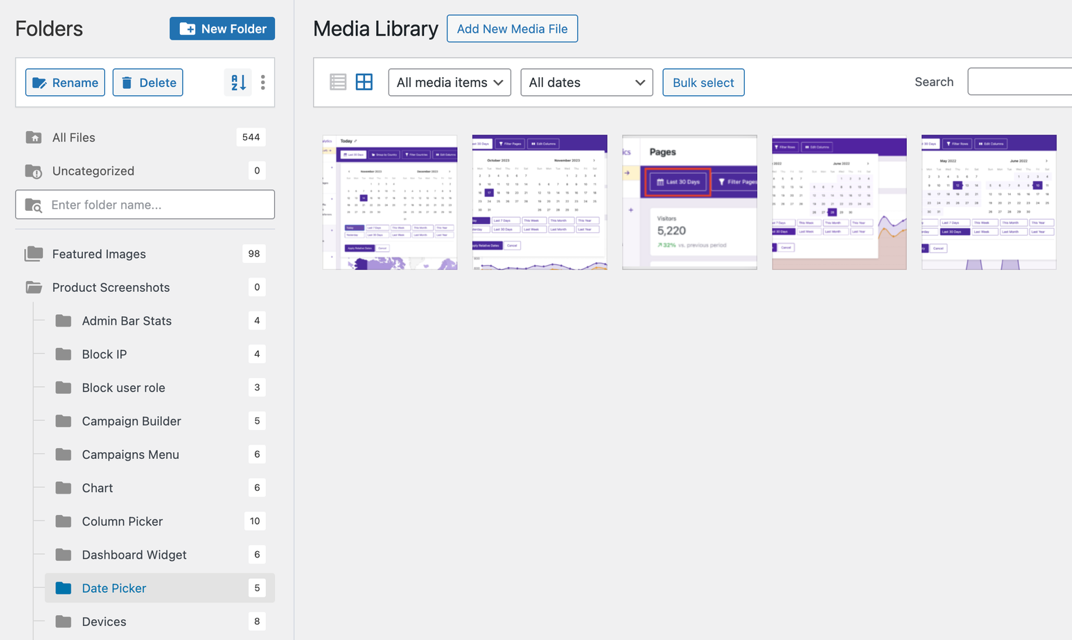
Freemius is one of your tools too 😁 Why’d you choose us?
I currently use Easy Digital Downloads for Compete Themes but I didn’t want the same for Independent Analytics. The reason? I wanted the checkout and licensing side of things to be handled without any effort on my part.
When you sell from your own site, there are inevitably issues and you have to figure them out, which can be extremely time-consuming. I don’t want to have to debug my checkout in the same way I don’t want to look into why my email newsletter isn’t sending.
I’d rather pay someone else to make sure it’s always running.
Which Freemius features do you find the coolest?
The top four features would be the checkout system, licensing management, audience analytics, and Mailchimp integration.
We haven’t had a single user contact us to say the checkout isn’t working or that they can’t activate their license key. Those types of requests can be a major burden on support, sales, and the customer experience. Avoiding them entirely has been amazing.
It’s a shame that WordPress removed the chart showing active install growth, but Freemius has helped us fill in the blanks with Audience Analytics. It’s great being able to see the growth of installs and new opt-ins.
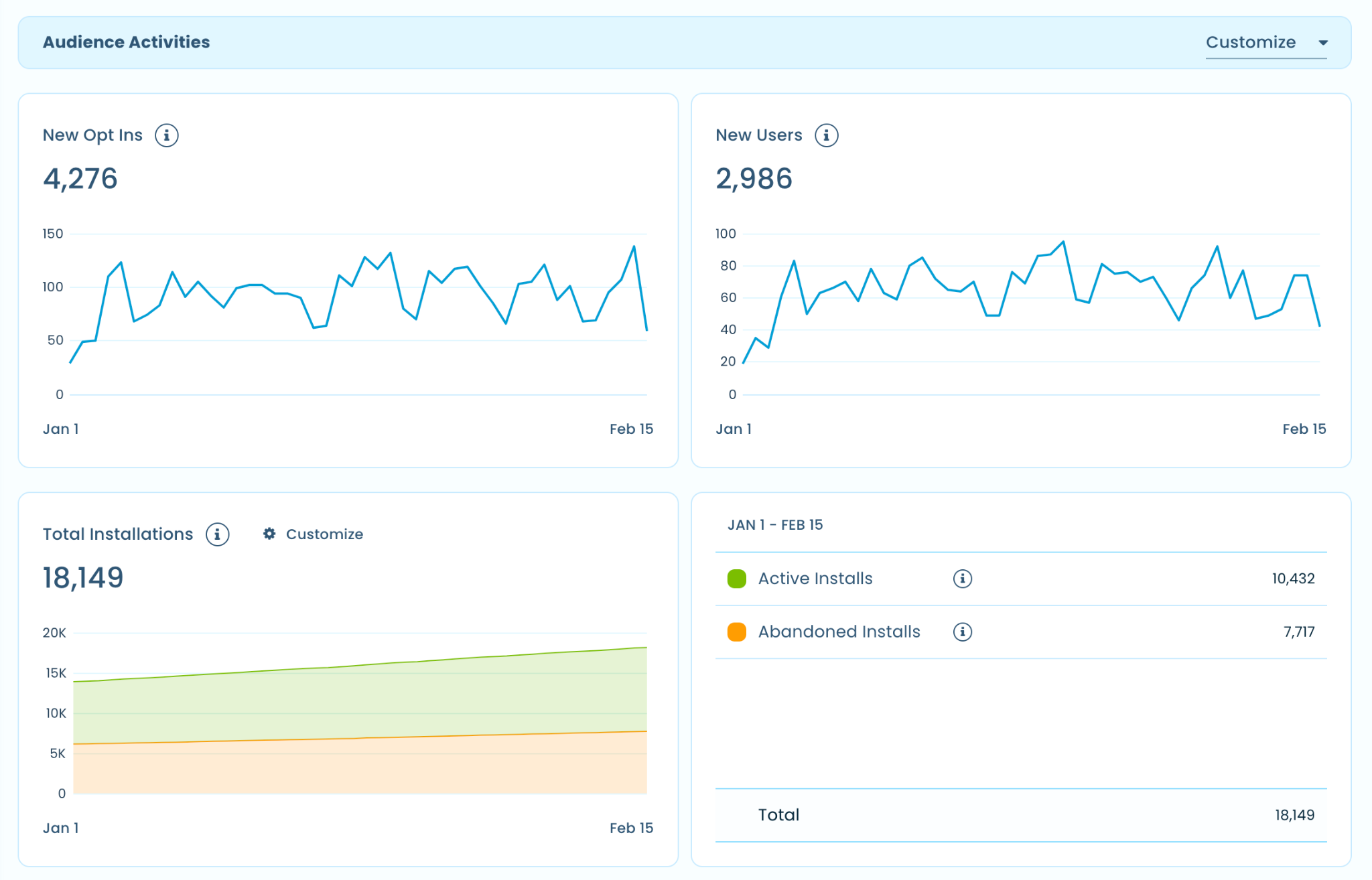
Even though this is a partial view of our total users, we get enough opt-ins to track our growth trends accurately.
The data on languages and tech being used has been helpful too. This helps us prioritize which languages we should translate our plugin into next and decide which versions of PHP and WP we need to continue to support.
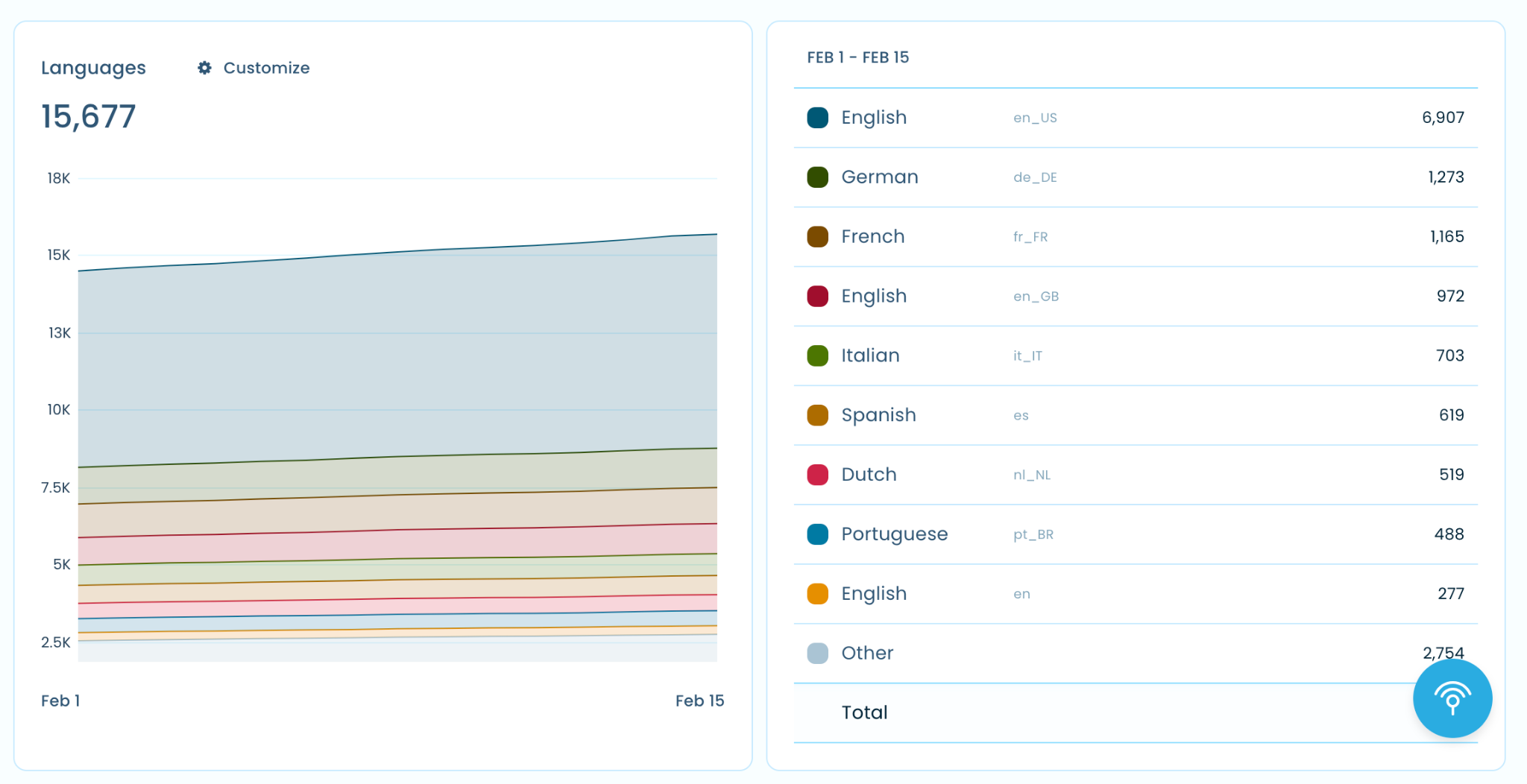
Are there any measurable ways you’ve benefited from using Freemius?
Yes, and it’s related to how Freemius automatically builds an email list for us. The functionality helps us nurture those subscribers through a month-long series that teaches them the basics of Independent Analytics.
While I’m not a huge fan of Mailchimp, I appreciate that Freemius has an integration fully set up. This is yet another thing I don’t have to maintain myself. We collect emails on our site and through Freemius opt-ins, and then we can take these subscribers through the same onboarding email series.
While we do our best to collect emails on our site, Freemius collects about 15x as many emails through the opt-in form. That makes a massive difference when you want to email everyone about a new feature or upcoming sale.
Plus, when it comes to sales like Black Friday, having a substantial email list is powerful. If Freemius didn’t add new users to our list daily, I don’t think our sales promos would be nearly as impactful.
Have you contacted our support team? If so, how was the experience?
I’ve contacted support a couple of times and they’ve always been responsive and willing to help. Mostly though, I check the official Freemius Slack group — which has nearly 1500 members! — and post there if I have a more general question.
I check in every once in a while to see what’s new and I always end up learning something because most of us are in the same boat: building and making software products and gaining knowledge along the way.
You have the option to install a magic plugin (hear me out). It takes you back in time and lets you: a) Redo the first year of launching Independent Analytics, and b) Redo the first year you started in software product creation. What changes, and what stays the same?
Oh man, I think Andrew would have a lot more to say about this 😅 If I could go back to the first year of Independent Analytics there are a lot of things that we’d change code-wise. Mostly architectural stuff, like how we store, fetch, and filter data.
If I could go back to the beginning of my entrepreneurial career with WordPress, I would have started plugin development sooner, and I would have kept a more open mind about what I could make.
I made some good choices early on and grew as a person and entrepreneur, but I lost my way at one point and started thinking small. I’d dismiss ideas as being too big or difficult to pursue.
If I could go back, I’d be more open-minded about larger projects and learning new things.
Your top tip for product makers about to take the first step?
Choose a good niche. If you do that right, many of the other elements will fall into place.
A niche sounds like it has to be a small market, but it’s more important that you have a small pool of serious competitors.
Just look at SEO plugins. With Yoast, RankMath, and AIOSEO dominating the market, you’d think there’d be no point in competing, but Squirrly SEO has 200K installs and The SEO Framework has 100K.
If there are only a few primary competitors, then there’s probably room for your product too. And if you believe your product can become the new de facto solution in the market, that’s even better!
Thanks for your time, Ben, and we wish you well in the future! Before you go, please drop your social handles so that people know where to find you.
Thanks for the opportunity to share my experiences!
I’m one of those weirdos who doesn’t have social media, so I’ll drop links here to all of the Independent Analytics social handles. We publish most of the same content across each channel, so readers can follow us wherever they prefer.








